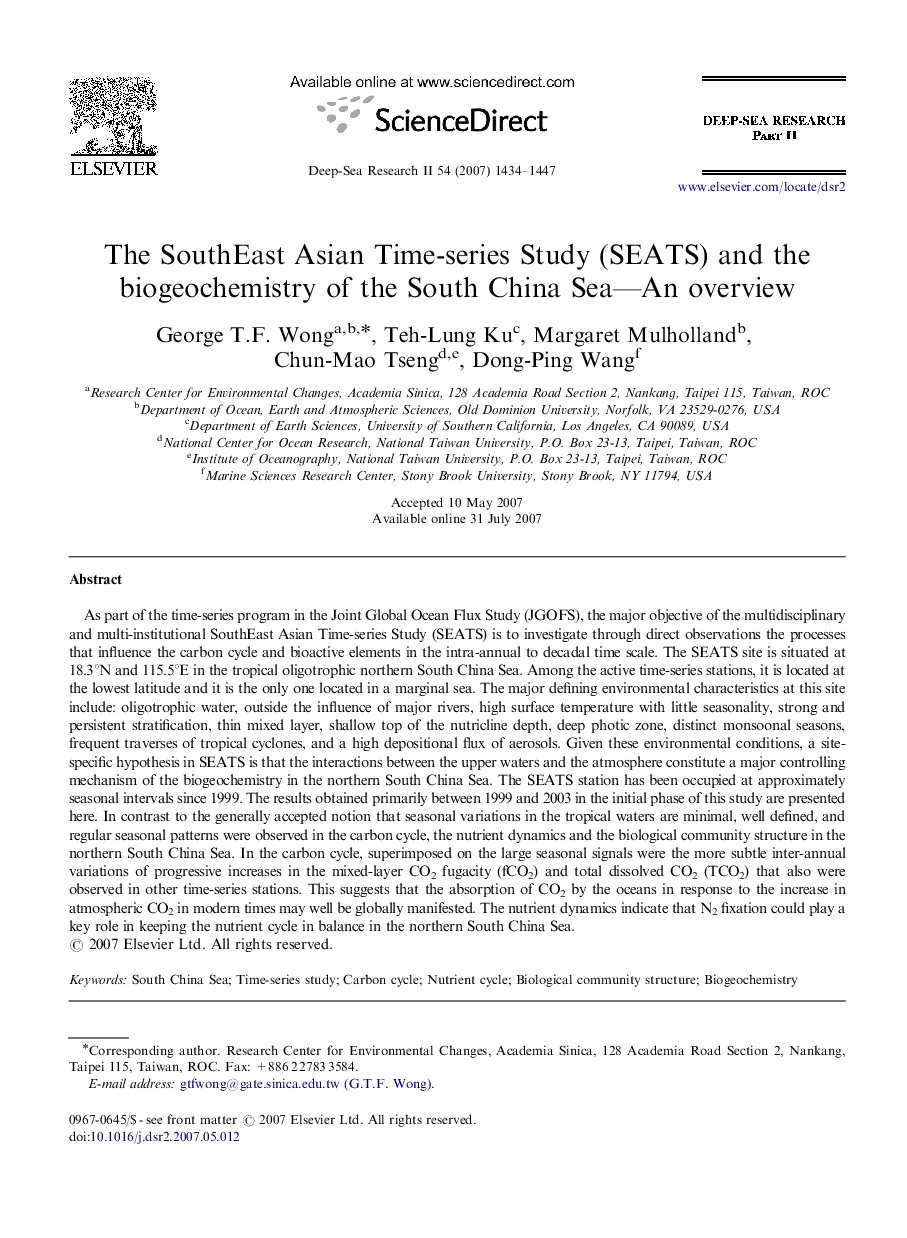| Article ID | Journal | Published Year | Pages | File Type |
|---|---|---|---|---|
| 4537748 | Deep Sea Research Part II: Topical Studies in Oceanography | 2007 | 14 Pages |
As part of the time-series program in the Joint Global Ocean Flux Study (JGOFS), the major objective of the multidisciplinary and multi-institutional SouthEast Asian Time-series Study (SEATS) is to investigate through direct observations the processes that influence the carbon cycle and bioactive elements in the intra-annual to decadal time scale. The SEATS site is situated at 18.3°N and 115.5°E in the tropical oligotrophic northern South China Sea. Among the active time-series stations, it is located at the lowest latitude and it is the only one located in a marginal sea. The major defining environmental characteristics at this site include: oligotrophic water, outside the influence of major rivers, high surface temperature with little seasonality, strong and persistent stratification, thin mixed layer, shallow top of the nutricline depth, deep photic zone, distinct monsoonal seasons, frequent traverses of tropical cyclones, and a high depositional flux of aerosols. Given these environmental conditions, a site-specific hypothesis in SEATS is that the interactions between the upper waters and the atmosphere constitute a major controlling mechanism of the biogeochemistry in the northern South China Sea. The SEATS station has been occupied at approximately seasonal intervals since 1999. The results obtained primarily between 1999 and 2003 in the initial phase of this study are presented here. In contrast to the generally accepted notion that seasonal variations in the tropical waters are minimal, well defined, and regular seasonal patterns were observed in the carbon cycle, the nutrient dynamics and the biological community structure in the northern South China Sea. In the carbon cycle, superimposed on the large seasonal signals were the more subtle inter-annual variations of progressive increases in the mixed-layer CO2 fugacity (fCO2) and total dissolved CO2 (TCO2) that also were observed in other time-series stations. This suggests that the absorption of CO2 by the oceans in response to the increase in atmospheric CO2 in modern times may well be globally manifested. The nutrient dynamics indicate that N2 fixation could play a key role in keeping the nutrient cycle in balance in the northern South China Sea.
